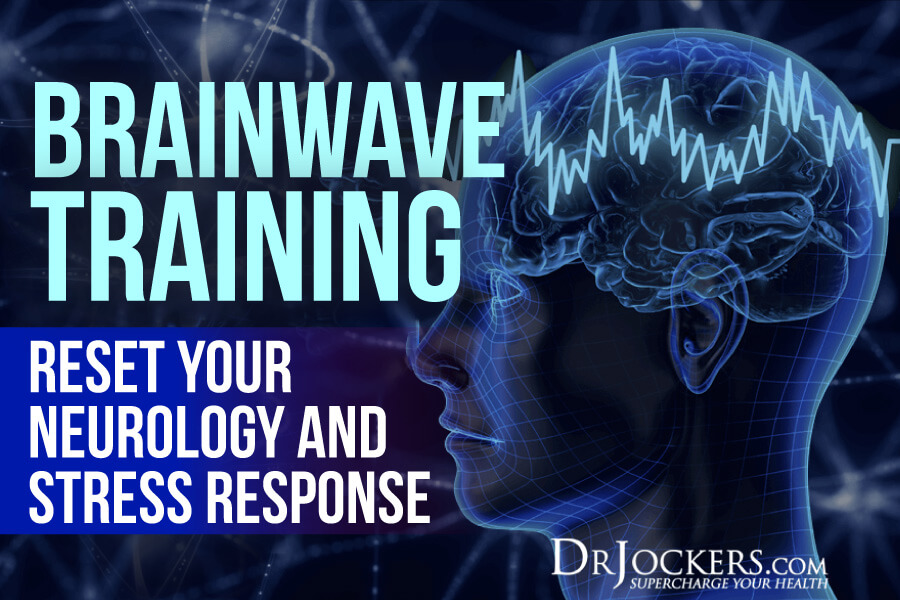 Brainwave Training: Reset Your Neurology and Stress Response
Brainwave Training: Reset Your Neurology and Stress Response
Do you feel stressed or anxious? Do you experience poor sleep, low energy, or brain fog? You may benefit from brainwave training. Your brainwaves are synchronized electrical activity within your brain. When your brainwaves are out of balance, it can lead to stress, low energy, anxiety, depression, poor sleep, poor concentration, chronic pain, and other issues.
In this article, you will learn what brainwaves are and what is the role of each kind of brain wave. You will understand how chronic stress impacts your brainwaves. I will explain how your brainwaves and your heart rate variability are connected. Finally, I will share my top strategies to improve your brainwaves.
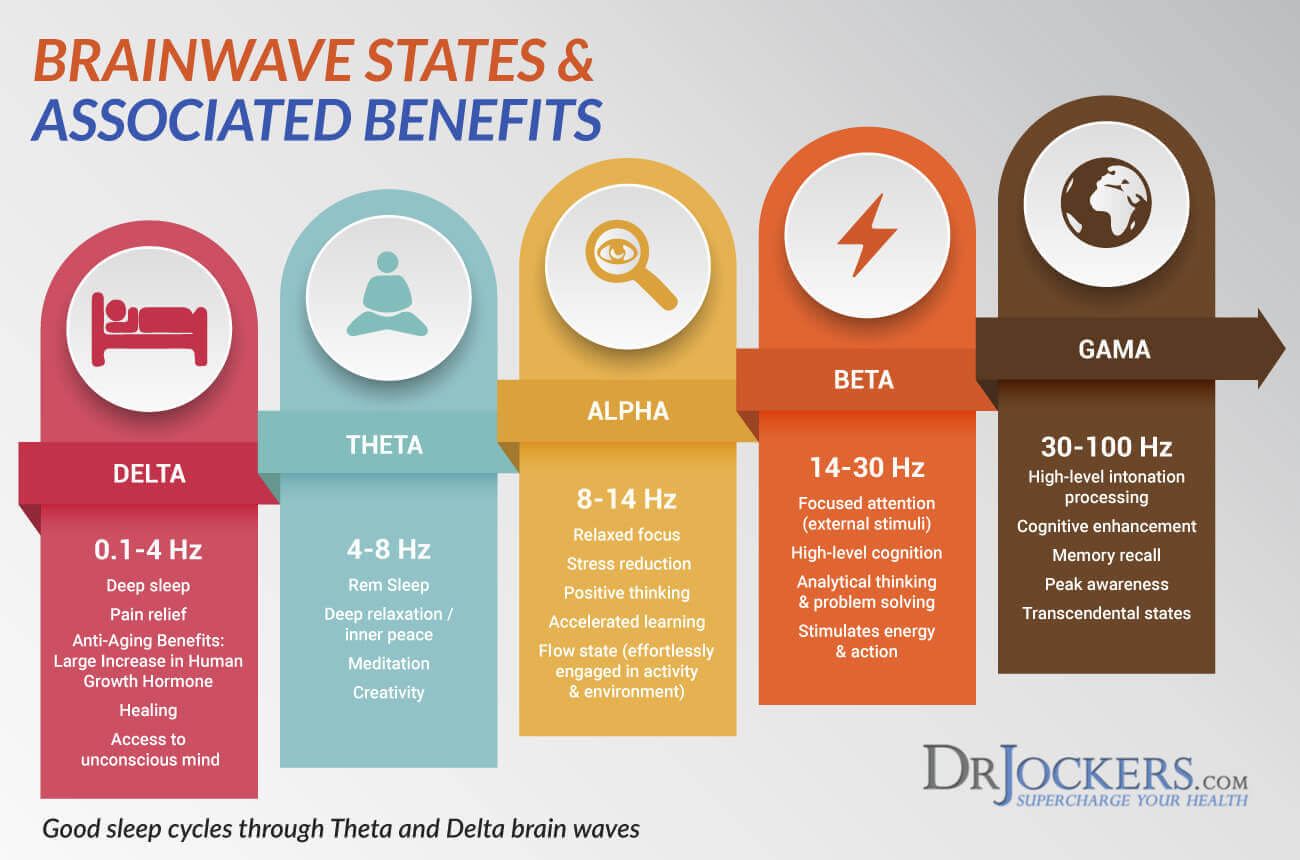
What Are Brainwaves?
Your brain is a fascinating organ. It has millions of neurons. Your thoughts, emotions, and behavior are all controlled by the communication between the neurons within your brains. This communication occurs through small electric current traveling along neurons across your brain circuits. Activated neurons produce electrical pulses resulting in a synchronized electrical activity called a brainwave.
Brainwaves can be detected by placing sensors on your scalp. Brainwaves are divided into categories or bandwidths based on function, speed, and loudness. They can be slow, loud, and functional, or fast, subtle, and complex. They are similar to musical notes that differ in frequency.
For example, a drumbeat is deeply penetrating and loud, but a flute is high-pitched and much more subtle. Just like in music, each brainwave has its function. Slower brainwaves feel slow, dreamy, or tired, while higher frequency brainwaves can feel fast, wired, hyper-alert, or energetic (1, 2, 3, 4, 5, 6).
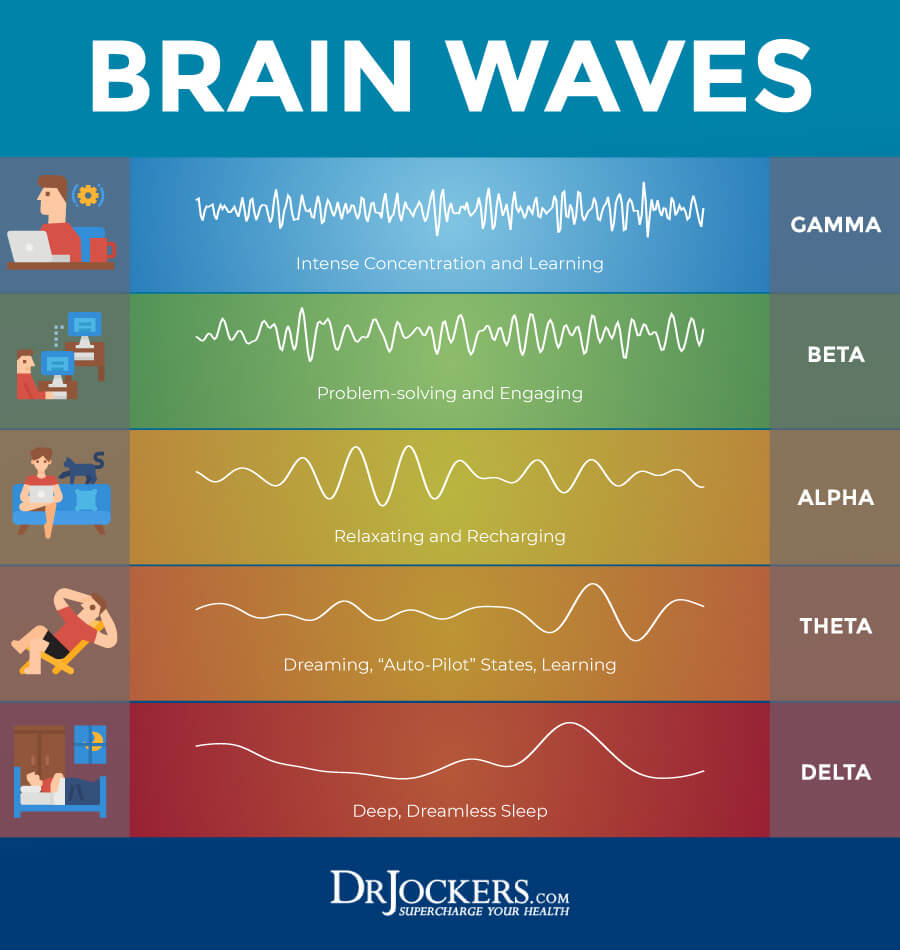
Brainwave speeds are measured in cycles per second in Hertz. They are divided into these categories:
Delta Waves (0.1 to 4 HZ)
Delta brainwaves have a lower frequency. They are slow, yet loud and deeply penetrating. They are generated in dreamless sleep or meditation. They are great for deep sleep, pain relief, anti-aging, healing, and accessing your unconscious state.
Theta Waves (4 to 8 HZ)
Theta brainwaves tend to occur during REM sleep or deep meditation. They are important for intuition, memory, and learning. They are vital for deep relaxation, inner peace, creativity, and meditation. A healing modality called Theta Healing uses theta brainwaves and theta waves to allow emotional healing and releasing unserving trauma and emotions.
Alpha Waves (8 to 14 HZ)
Alpha brainwaves tend to occur when you have flowing thoughts. Sometimes they occur during meditation. They aid relaxed focus, stress reduction, positive thinking, better learning, and flow states. They help you stay in present and support a mind-body integration and a calm mental state.
Beta Waves (14 to 30 HZ)
Beta brainwaves occur during your normal wakeful states when you are targeting your attention to the world outside of you or cognitive tasks. It is helpful for focused attention, high-level cognition, analytical thinking, focused mental activity, problem-solving, decision making, energy stimulation, and action.
Gamma Waves (30 to 100 HZ)
Gamma brainwaves are high frequency. They are the fastest brainwaves that stimulate information processing and help your neurons to pass information quickly. They are important for high-level intonation and processing, cognitive enhancement, memory recall, peak awareness, and achieving transcendental states.
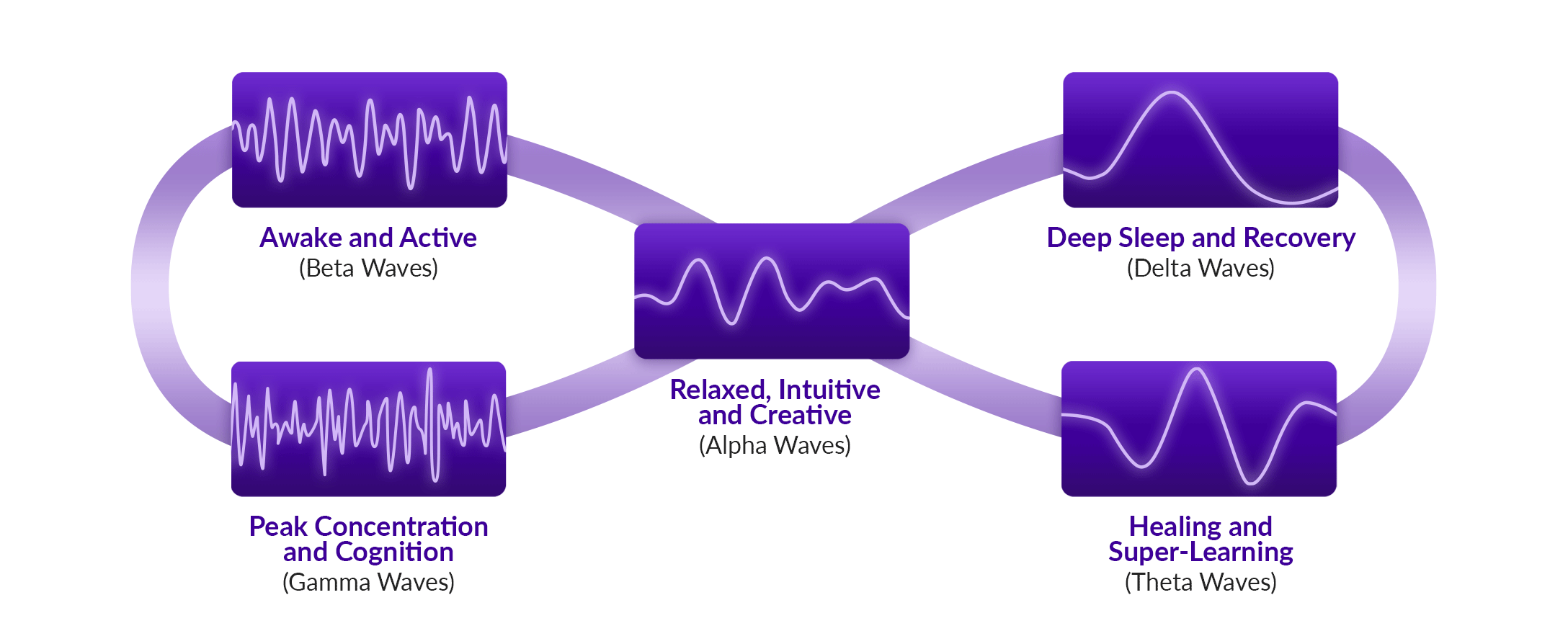
How Chronic Stress Impacts Brain Waves
Your brainwave physiology is deeply connected to and important for your daily life, health, and mental health. When your brainwaves are out of balance, it can impact your emotional and neurophysiological health. Under-arousal can result in chronic pain, insomnia, attention deficit, and depression.
Over-arousal can lead to chronic nerve pain and spasms, agitation, anger, aggression, anxiety, nightmares, and sleep issues. A combination of the two may cause anxiety, depression, or ADHD. Brainwave instabilities may cause migraines, tinnitus, obsessive-compulsive disorder, rage, tics, panic attacks, bipolar disorder, eating disorders, epilepsy, and other issues.
One of the major things that can impact and compromise your brain waves and brain function is chronic stress. Chronic stress is a major problem that is accepted as a normal part of our modern-day life. However, chronic stress is anything but normal. It is incredibly harmful to your brain, mental health, emotional health, and physical health.
Your limbic system is a part of your brain that is responsible for your emotions and memory. It has four parts: your hypothalamus, amygdala, thalamus, ad hippocampus. When your limbic system is compromised it affects your brainwaves and impacts your entire mental, emotional, and physical health.
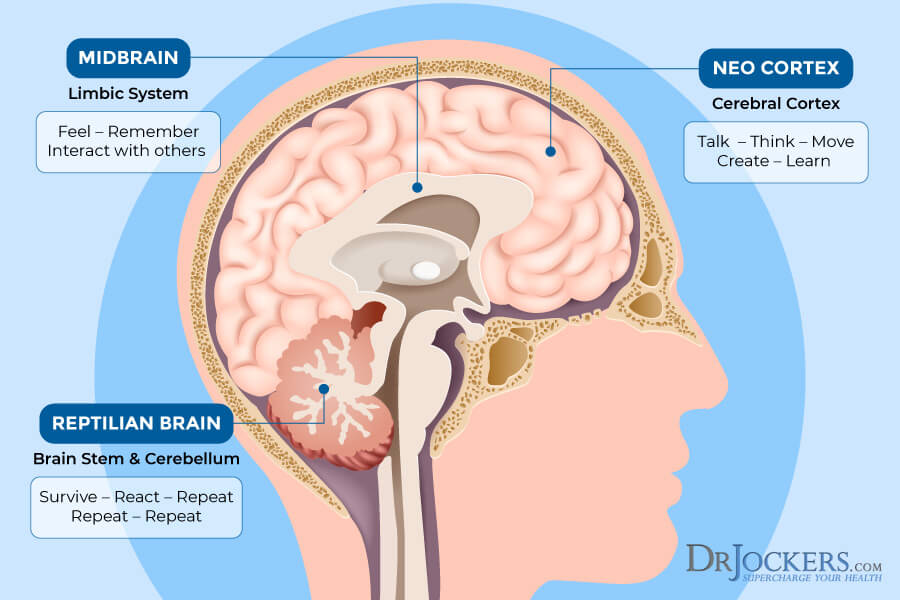
Chronic Stress and The Limbic System
Chronic stress can activate your limbic system in a negative way causing damage and a variety of health issues. According to a 2003 study, chronic stress can impact your limbic system. Under stressful situations, your limbic system activates a flight or fight response.
This is very helpful in case of acute stress, for example, if there is a fire or a dog is chasing you, but it incredibly damaging under chronic stress. Chronic stress leads to a constant release of cortisol keeping you in a constant stressed, anxious, and heightened state. This can negatively impact your hippocampus, which is an important part of your limbic system.
Chronic stress can impact other parts of your limbic system as well. A 2016 research has found that chronic stress can lead to changes in your amygdala and increase fear, anxiety, and depression. According to a 2006 study, traumatic stress affects your amygdala, hippocampus, and prefrontal cortex and can result in PTSD symptoms.
Since your limbic system is a part of your brain, the effects of chronic stress on your limbic network also affect your brainwave physiology. According to a 2013 study, stress can affect theta-activity in your limbic network and can increase anxiety as a result. If you are experienced long periods of or chronic stress, your brain can get stuck in beta and delta waves.
While beta and delta are important brainwaves and have their role, they are also connected to anxiety and unease. They don’t support relaxation like other brainwaves. When your brain stays in beta and delta for a long time due to chronic stress, it can lead to anxiety, high blood pressure, hyperglycemia, weight gain, metabolic syndrome, and diabetes (7, 8, 9, 10).
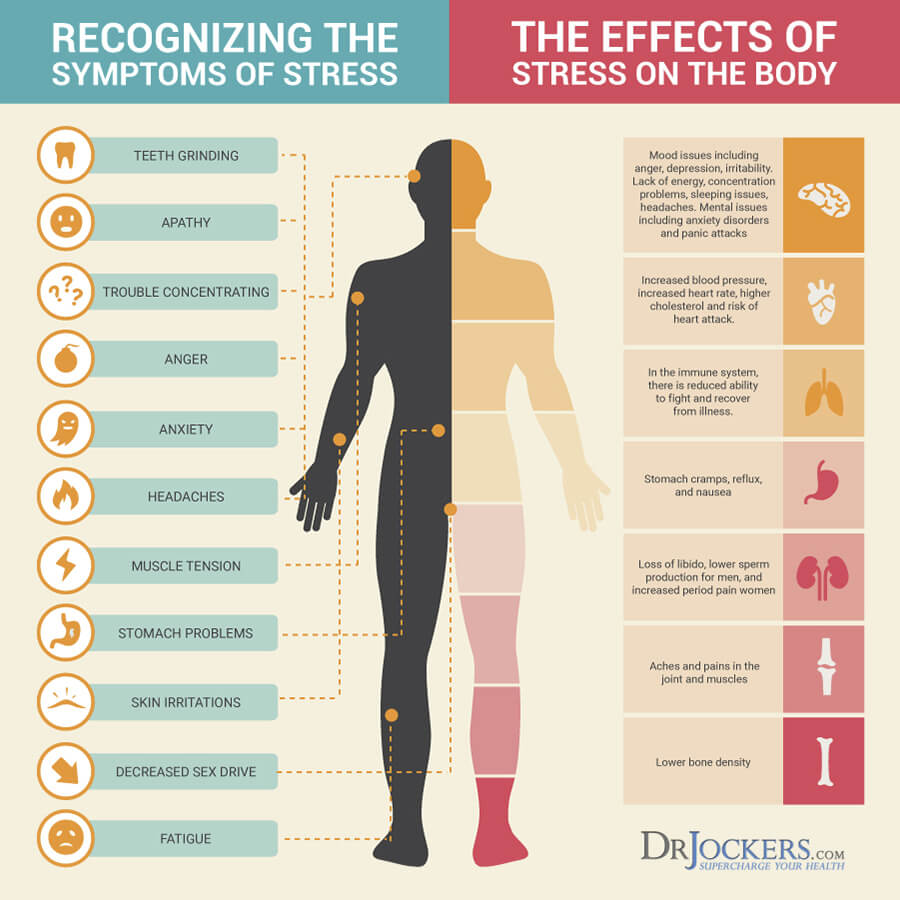
Brainwaves and Heart Rate Variability
Heart rate variability (HRV) is the measure of variation in time between your heartbeats controlled by your autonomic nervous system (ANS). In your brain, your hypothalamus is responsible for constant information processing.
Through the ANS, it can send information to your body to help relax and stimulate different functions. For example, if you encounter a stressful situation, your hypothalamus will send a signal to respond, ideally to prompt relaxation. However, chronic stress, poor diet, poor sleep, and poor lifestyle choices may interrupt this balance, lead your body to overdrive, and negatively affect your HRV.
Your HRV and brainwave physiology both change depending on your state if you are stressed or relax. No wonder that the two are connected. A 2013 study exploring the benefits of 8 weeks of a basic training course in autogenic meditation has found that cardiac markers and EEG alpha activities were both correlated with meditative states.
A 2016 study looking at HRV biofeedback-based stress management tool using rhythmic breathing, actively self-generated positive emotions has found that those who received the HRV training experienced decreased anxiety, improvements in their HRV, and positive changes in theta and alpha brain waves, and alpha asymmetry.
A 2014 study has found that autogenic meditation can increase relaxation by increasing alpha and decreasing high beta brainwaves indicated by HRV and EEG measures. Another 2014 study has found that HRV is a helpful tool to understand different sleep states and brainwaves correlated with it (11, 12, 13, 14).
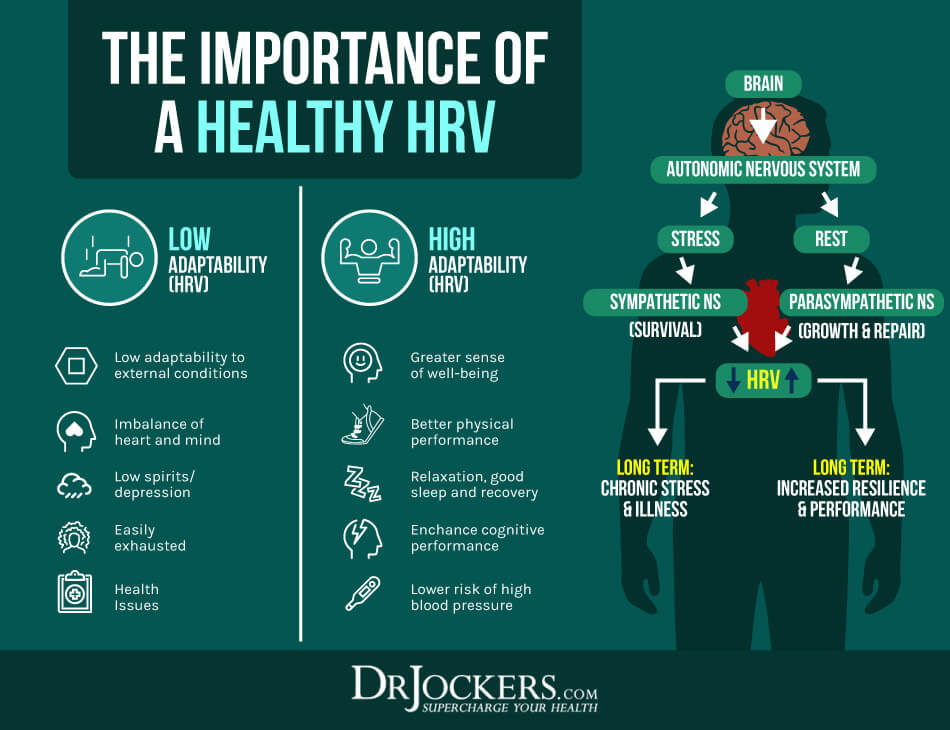
Strategies to Improve Brainwaves
Improving your brainwaves is critical for your mental, emotional, and physical health. Here are my favorite strategies to improve brainwaves:
Blood Sugar Stabilizing Nutrition Plan
Research has shown that having high blood sugar can negatively impact your hippocampus and amygdala and impair your brain health. As you know, your hippocampus and amygdala are part of your limbic system, which affects your brainwaves. Not to mention that high blood sugar levels negatively affect your entire body as well. Following a blood sugar stabilizing nutrition plan can help to improve your brainwaves and brain health.
Remove sugar and refined carbs from your diet. Remove processed foods, artificial ingredients, and inflammatory foods. Eat a diet low in carbohydrates, and get your carbs from healthy sources, such as low glycemic index fruits, like berries. Eat plenty of greens, vegetables, herbs, spices, healthy fats, and clean protein. Keep regular mealtimes. Eat balanced, high-fat, moderate-protein, low-carbohydrate, and high-nutrition meals. To learn more about the low-carb ketogenic diet I recommend, read this article (15).

Focus on Gratitude
As you know, chronic stress is not good for your brainwaves and brain health. Gratitude helps to keep you in a positive and relaxed state. It helps to lower anxiety, depression, and stress, and supports your brain. I recommend that you practice gratitude on a daily basis.
Start and finish your day with a short gratitude practice. Keep a gratitude journal listing the things you are grateful for. Stop throughout the day and appreciate the small things in life (7, 8, 9, 10).

Prioritize Sleep
Sleep is critical for your overall health. It also helps to lower your stress and support relaxation and repair. Make sure to go to bed and wake up around the same time every day. Avoid electronics, food, caffeine, and stress in the evening.
Develop a relaxing bedtime routine. Engage in relaxing activities, such as meditation, prayer, stretching, journaling, and gratitude. Make sure that your bedroom is a peaceful sanctuary with a comfortable bed, bedding, and pillows (14).
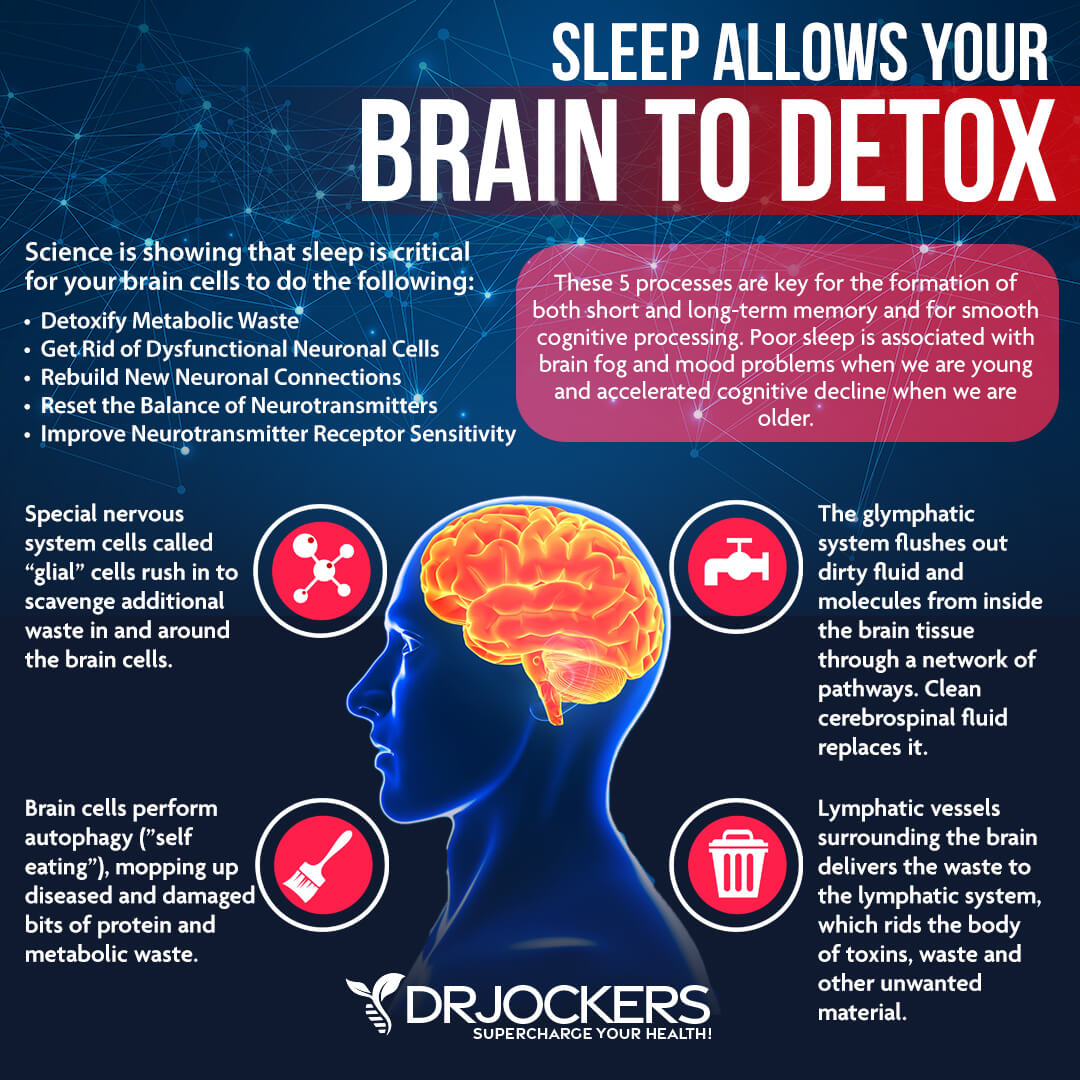
Regular Exercise
Regular exercise is critical for your brain and overall health. It lowers your stress levels, boosts your mood, and decreases anxiety. Start your day with a short stretch or yoga routine, rebounding, some grounding, and maybe a loop around the block.
Move throughout the day by strolling down the park during lunch, taking the stairs, stretching regularly, walking your dog, and playing with your kids. Exercise for 20 to 30 minutes at least five times a week practicing a combination of cardio, strength- and resistance training, and low-impact exercise (12).
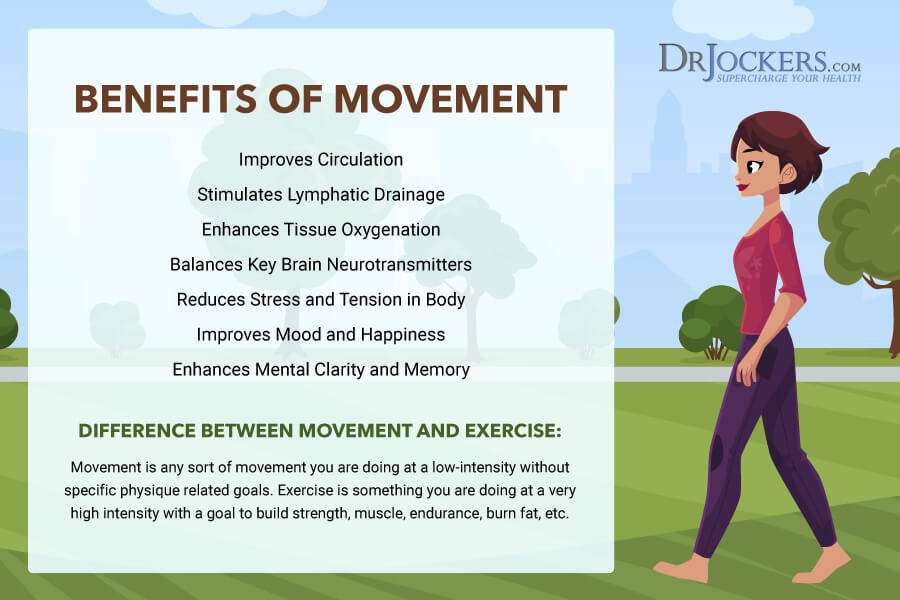
Minimize EMF Exposure
Sensitivity to electromagnetic fields (EMFs) can play a role in limbic system dysfunction and brainwave problems. An EMF is a physical produced by an electrically charged object, including WiFi routers, cell phones, smart meters, microwave ovens, and more. According to a 2019 study, EMF can disrupt your central nervous system function.
EMF sensitivities can lead to cognitive and mood disturbances, insomnia, fatigue, dizziness, ringing in the ear, and other symptoms. To reduce your EMF exposure, keep your phone and other electronics off or in airplane mode whenever possible, reduce the use of electronics, reduce WiFi use opting for hard-wired connections, make sure that your electrical wiring in your house is up to date, and keep your electronics away from your bedroom. To learn more about EMF and how to minimize exposure, read this article (16).

Use Magnesium
Magnesium is critical for stress relief, relaxation, brain health, mental health, and neurological health. Research has shown its potential benefits for traumatic brain injury, depression, anxiety, and other mental health issues. I recommend eating magnesium-rich foods include almonds, spinach, avocados, bananas, kale, pumpkin seeds, sunflower seeds, and cashews.
However, eating magnesium-rich foods is not enough to optimize your brain health, especially if you have deficiencies or signs of vagal tone issues. I recommend Brain Calm Magnesium to improve your brainwaves, energy, mood, and mental health (17, 18, 19).
Guided Visualization
As you’ve learned, meditation is highly effective for improving your brainwave physiology. Guided visualizations are essentially a guided meditation technique that can lower your stress levels, improve your mood, better your mental health, and support your brains.
Guided visualizations guide your meditation with a calm and soothing voice to help to relax and calm your mind and body. Guided visualization can help you visualize a mental or physical state you want to be helping you to get there in reality. You can find guided visualization online and through various meditation apps (11, 12, 13).
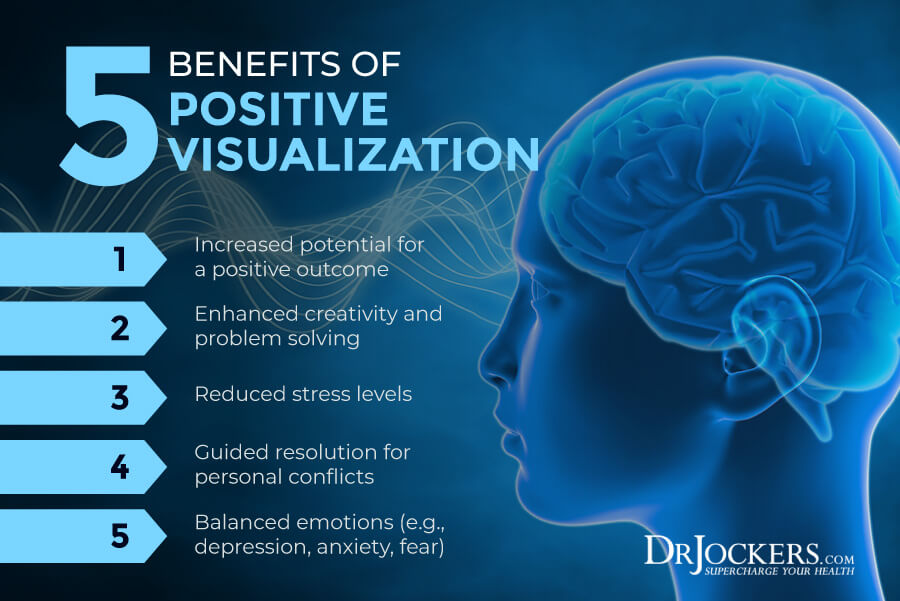
Binaural Beats
Binaural beats use two tones at two slightly different frequencies, one in each ear. When this happens, your brain will process the beat at the difference in frequencies. Let’s say you hear a sound at 122 HZ in one ear and another sound at 110 HZ in your other ear.
You won’t be able to hear the two different tones but you will hear one tone at 12 HZ, which is the difference between the two. Binaural beats are basically an auditory illusion. While they have been explored in music, they also have many health benefits. They have been linked to improved relaxation, reduced anxiety, lower stress, less pain, better concentration, and enhanced mood. According to a 2005 study, they can reduce anxiety and according to a 2007 study, they can improve your sleep and mood. You can find binaural beats on youtube (20, 21).
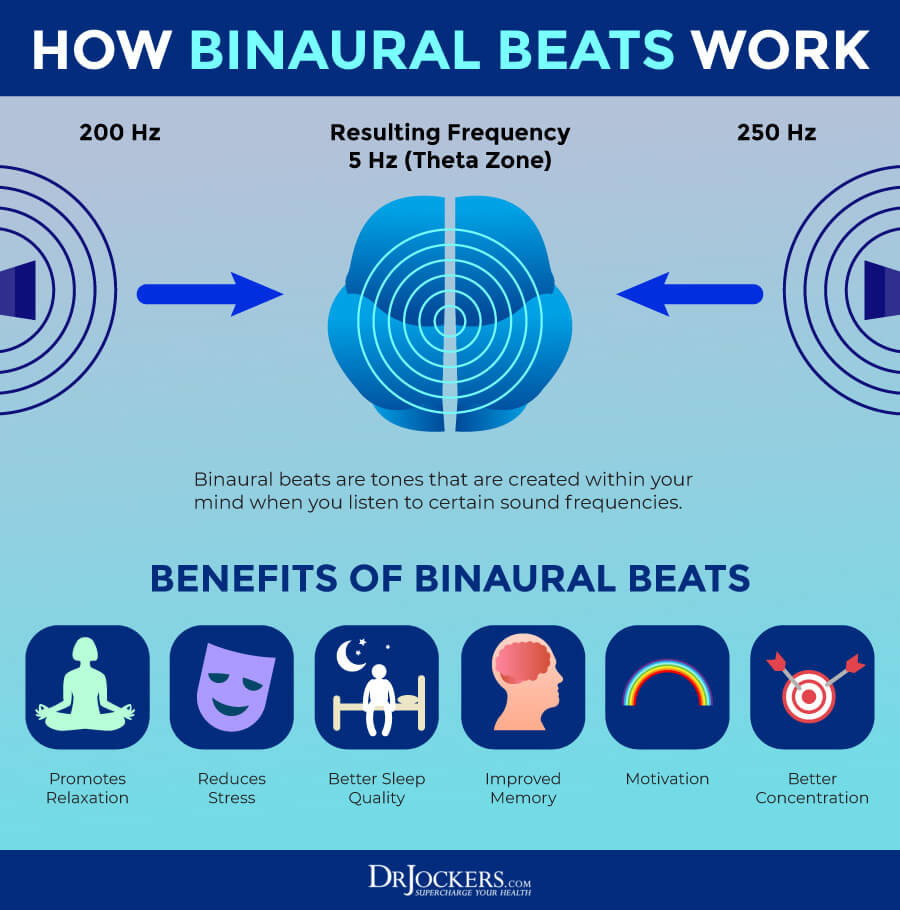
Pulsing Light
Pulsing light therapy is a form of light therapy that’s increasingly used for inflammation, pain, and tissue regeneration. According to a 2011 review, pulsing light therapy has many health benefits, including nerve regeneration.
According to a 2016 study, it may benefit the treatment of Alzheimer’s disease. A 2018 study has found that red/near-infrared light therapy may be beneficial for the treatment of brain injuries (22, 23, 24).
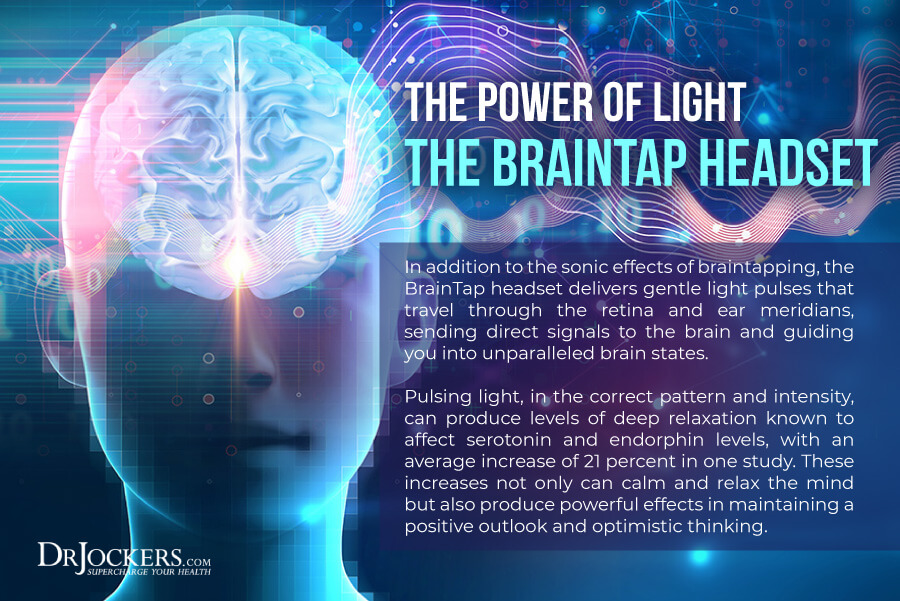
Use The Brain Tap System
The Brain Tap System is a brilliant system that helps to restore your brain’s natural ability to balance. It helps to soothe your brain. It enhances relaxation and revitalization. This system provides you with a range of brainwave function to achieve balance.
It is an incredibly quick easy, and effective way to improve your brainwave physiology, lower stress, feel calm and controlled, improve cognition, experience more energy, and positivity, and feel overall healthier. Only 10 to 20 minutes a day can make a tremendous difference in your brain health, mental health, energy, and physical well-being.
Final Thoughts
Brainwave physiology is rarely talked about when it comes to your health. Yet, if your brainwave physiology is out of balance, it can increase your risk of stress, anxiety, depression, poor sleep, low energy, poor concentration, memory, and pain.
Follow my top strategies to improve your brainwave function, reset your neurology and stress response, and increase your health. If you want to work with a functional health coach, I recommend this article with tips on how to find a great coach.
On our website, we offer long-distance functional health coaching programs. For further support with your health goals, just reach out—our fantastic coaches are here to support your journey.





Dr. Jockers,
Thank You for all your extremely helpful resources! They have been life changing for me!
I do have an issue with the “claims” and high pricing of the Braintap headset. If the claims were Really True, just about every household in America would have one, as so many people are looking for relief from chronic stress! The “claims” seem false and therefore could discredit you as a Trustworthy Doctor with Integrity! Please re-evaluate the enormous “claims” on this product!
I always read your articles and look for the links to purchase or continue reading, but there was no info on where to or how to find or do these therapies. Can you provide?
Yes here is a link for the BrainTap device https://bit.ly/3reK2TN